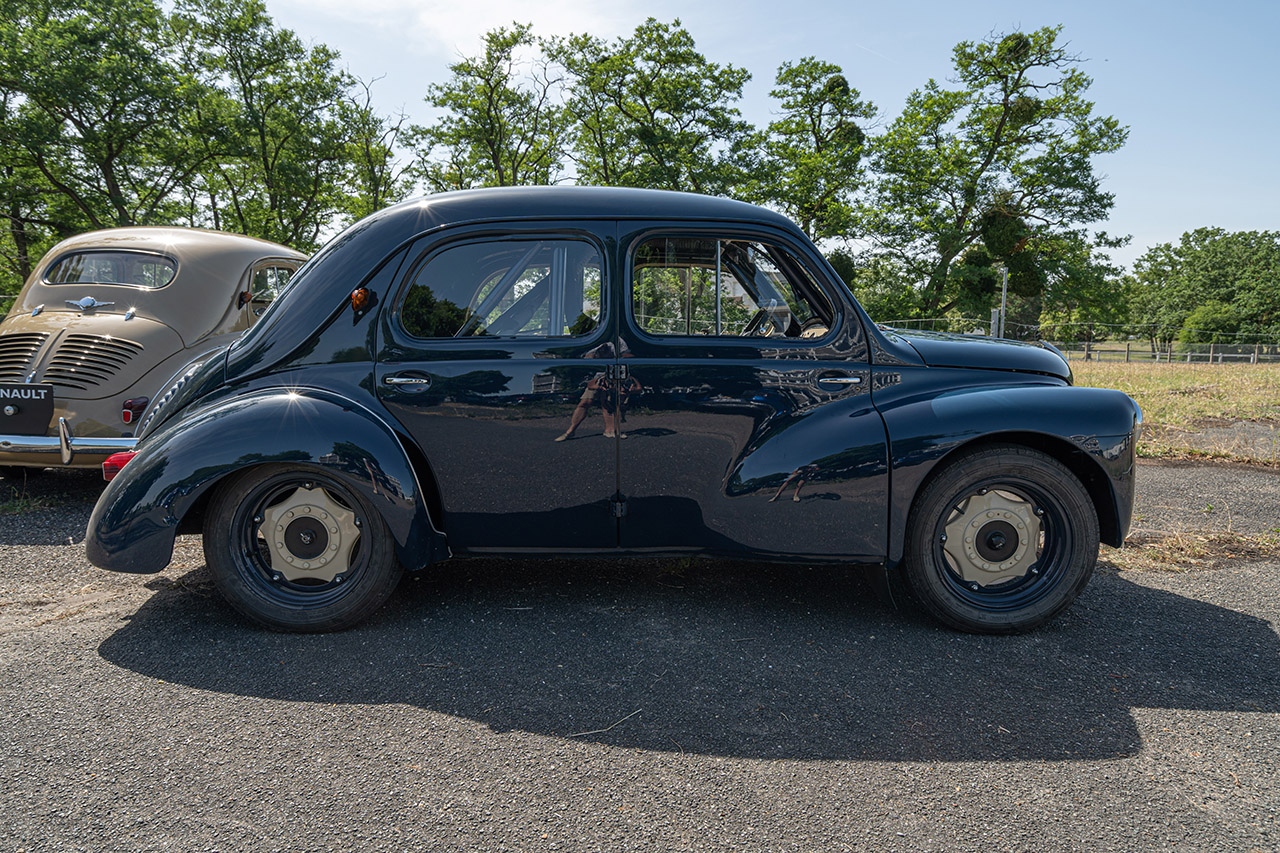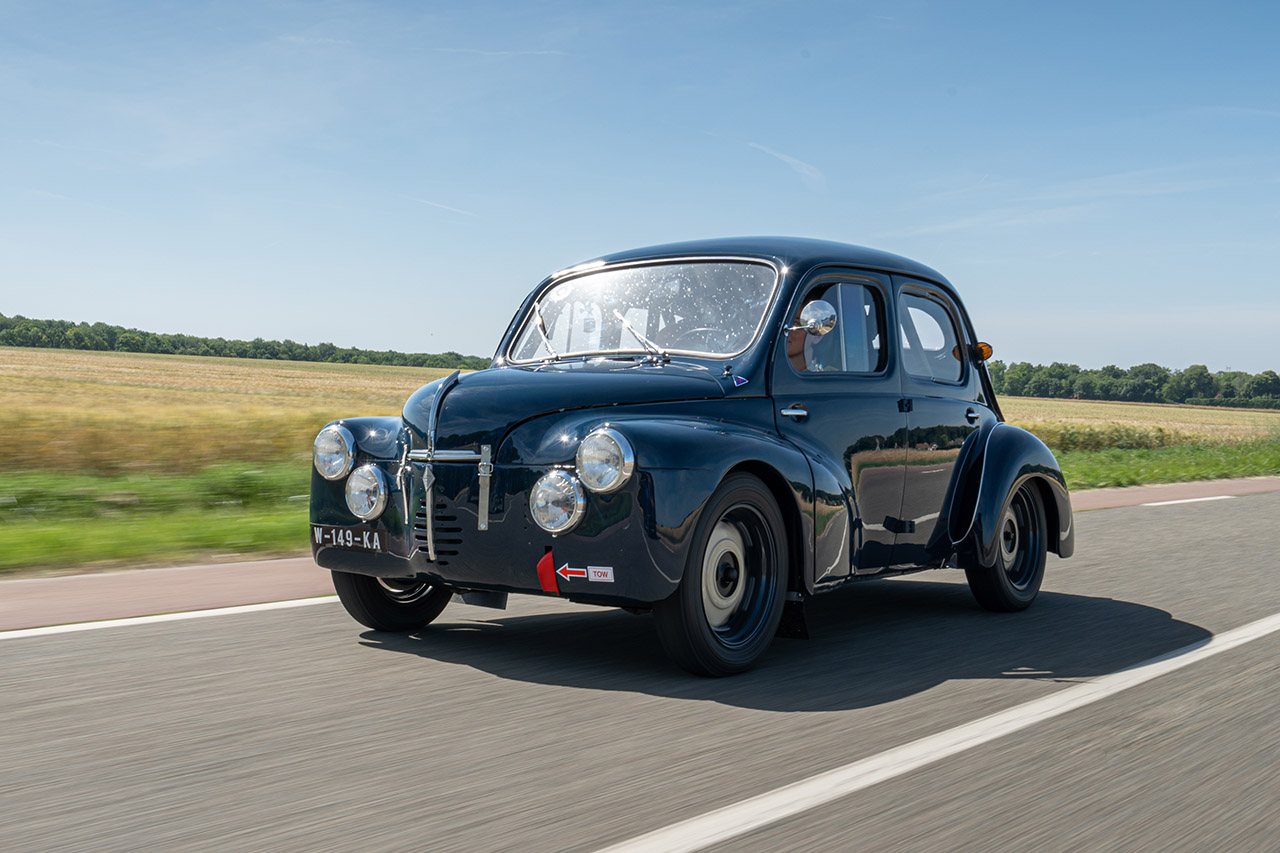
Nothing predestined the 4CV to become a racing beast! And yet, the small Renault launched at the end of the Second World War will experience an incredible destiny on the track and on the circuit, even participating in the 24 Hours of Le Mans. A route that it finds again in 2022 on the occasion of Le Mans Classic.
Once upon a time there was the 4CV… The story begins in the 1940s. France is occupied. At Renault, the Boulogne-Billancourt (Hauts-de-Seine) factory is running at full speed on behalf of the German army, to which it supplies (under duress) military vehicles and armored vehicles. The manufacturer’s engineers were then prohibited from working on new automotive projects. But three of them, Fernand Picard, Charles-Edmond Serre and Jean-Auguste Riolfo, will reflect in the greatest secrecy – without the knowledge of Louis Renault – on a new small and economical model. They imagine it to be both sober in fuel and responding to the various constraints of shortage of raw materials.
A 4CV developed in the greatest secrecy
Jean-Louis Pichafroy, Renault Classic’s technical manager, explains the rest: “ The story says that Louis Renault realized that something was going on when he came across a part that had no connection with the production at the time. After admitting to working on a vehicle project, the engineers receive the green light from the boss to continue their research. In 1943, a first prototype – influenced by the design of the Beetle (presented in 1938) but not as attractive – was discreetly developed. Two others will follow, the last being the one that will be closest to the future production sedan with its four doors.

Thanks to this clandestine work, Renault has a head start on its competitors. At the end of the war, he had a successful project for a small car ready to be industrialized! It was Pierre Lefaucheux, appointed CEO of Régie Renault after the death of Louis Renault in 1944, who made the decision to launch the 4CV. The car, symbol of the revival of the brand, was presented in September 1946. But, due to a lack of raw materials, production did not begin until August 1947.
From series to competition…

Interest in the little Renault was confirmed at the 1947 Paris Motor Show. Its format and round lines were attractive, as was its color. This yellow hue, taken from a stock of paint recovered after the war, earned it the nickname “butter clod”. In 1948, the 4CV tried out (successfully) in competition. Five private drivers shine at the wheel of the Mont Ventoux hill climb by taking the first five places.


The 4CV will then be entered in the Coupe des Alpes (key stage in the creation of the Alpine brand by Jean Rédélé), the Tour de France automobile or even in Monte-Carlo, where Louis Rosier and his son win the victoire. In 1949, after ten years of interruption, the 24 Hours of Le Mans are back! Forty-nine crews are at the start, including the barely modified 4CV of Camille Hardy and Maurice Roger. The car stamped with number 57 will become a legend by becoming the first rear-engined model to take part in the competition. Unfortunately, the 32hp racing car retired 21 laps after the start, victim of a mechanical breakdown.

The 4CV under the Dunlop footbridge.
The arrival of the “sporty” 1063

In 1950, five private pilots took part in the classic Le Mans race. Three will cross the finish line, signing a hat-trick in their category. These performances give ideas to Renault. In 1951, the Régie marketed a sports variant of the 4CV called 1063. It benefits from a completely reworked and more efficient engine: it offers 35 hp. In addition, the trains, the direction and the damping are modified. Less than 100 units will see the light of day. That year, a few copies took the start in the colors of private teams, but not only! Renault, hitherto hermetic to the idea of taking part in this competition, in turn embarked on the adventure by entering a factory car. Decision he reiterated in 1952, with a 43 hp model capable of reaching a top speed of 105 km/h, and in 1953. During this edition, only one car reached the finish. The manufacturer with the diamond finally decides to stop the costs.
A 4CV at Le Mans Classic


The 4CV entered in Le Mans Classic 2022 is not a 1063. Too rare! Renault Classic has therefore chosen to prepare a 1062 with a look similar to that of the model No. 46 entered in 1950. Moreover, in the blink of an eye, the model entrusted by the manufacturer to the The argus has the same number. ” As these were private cars, everyone did what they wanted in terms of decoration. This one had the distinction of having headlights a bit like the 1063, but positioned differently. And the whiskers had been removed “, explains Jean-Louis Pichafroy.

To meet the technical specifications of Le Mans Classic, the Renault teams have brought safety with the addition of arches and increased the overall level of performance. On the menu: improved braking with a dual circuit, modification of the front and rear axles, revised damping… The weight of the car does not exceed 600 kg. The power was not communicated.

” These transformations were made within the limits and in compliance with the rules of the technical passport “, emphasizes the manager of Renault Classic. And to validate the modifications made to the “bombinette”, Renault Classic called on one of its former drivers, now a tune-up, Alain Serpaggi. ” The 4CV is an old memory for me, he confides. The first time I rode in this car was in the 1950s. My parents had just bought a 4CV after their Renault Monaquatre. That’s the only memory I have of it! So it gives me great pleasure to be able to drive today with this car in the Le Mans Classic. The 4CV and its drivers can be found on the Renault stand in the Prégrille village. An exhibition of diamond models is organized headlining another small and popular car: the R5, which is celebrating its 50th anniversary.


Sources: Renault, renault4cv.fr, newsdanciennes.fr

















